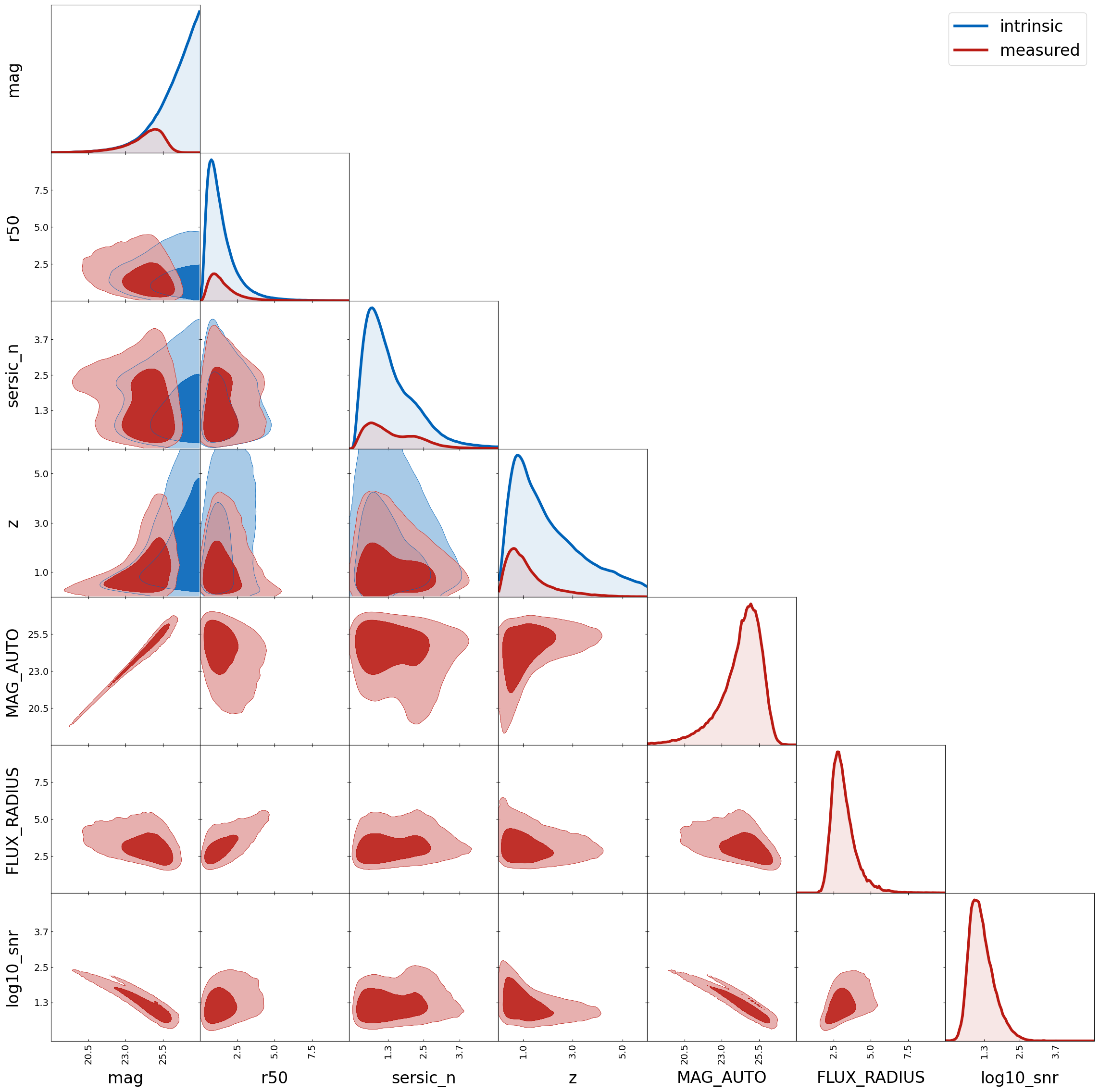Emulate image simulation
The intrinsic catalogs contain all galaxies up to a predefined cut in absolute magnitude.
Not all of these galaxies would actually be detected when building up a catalog from
actual astronomical images. The detection probability is to first
order a function of the apparent magnitude. However, there are further
effects such as blending or background noise that impact the
detection probability (especially at the faint edge). Furthermore, an
intrinsic size or magnitude will not be the size that is measured in
an actual astronomical image by a source extraction software such as
SExtractor. Both background noise or the point spread function
(PSF) have a strong impact on the measured parameters and introduce
a scatter.
Ideally, these effects are taken into account by performing image simulations. But as shown in Fischbacher et al. (2024), it is possible to emulate this effects accurately. We show below how to generate a galaxy catalog with an emulator trained on HSC deep fields. Note that the detection classifiers predicts if an object is detected as a galaxy, most stars are therefore rejected and only a few stars contaminate the catalog (based on the accuracy of the star galaxy separation method). The emulator has been trained on the phenomenological version of GalSBI, but it can be used in combination with the SPS version as well. We caution the users that GalSBI-SPS produces objects with properties that might be outside of the domain with which the emulator has been trained. We therefore recommend the use of GalSBI-SPS in combination with UFig to generate observed-like photometry.
from galsbi import GalSBI
from trianglechain import TriangleChain
import matplotlib.pyplot as plt
model = GalSBI("Fischbacher+24")
model(mode="emulator")
cats = model.load_catalogs()
cat_ucat = cats["ucat galaxies i"]
cat_sextractor = cats["sextractor i"]
ranges = {
"mag": [18, 28],
"r50": [0, 10],
"sersic_n": [0, 5],
"z": [0, 6],
"MAG_AUTO": [18, 28],
"FLUX_RADIUS": [0, 10],
"log10_snr": [0, 5],
}
tri = TriangleChain(ranges=ranges, params=list(ranges.keys()), fill=True, histograms_1D_density=False)
tri.contour_cl(cat_ucat, label="intrinsic");
tri.contour_cl(cat_sextractor, label="measured", show_legend=True);
